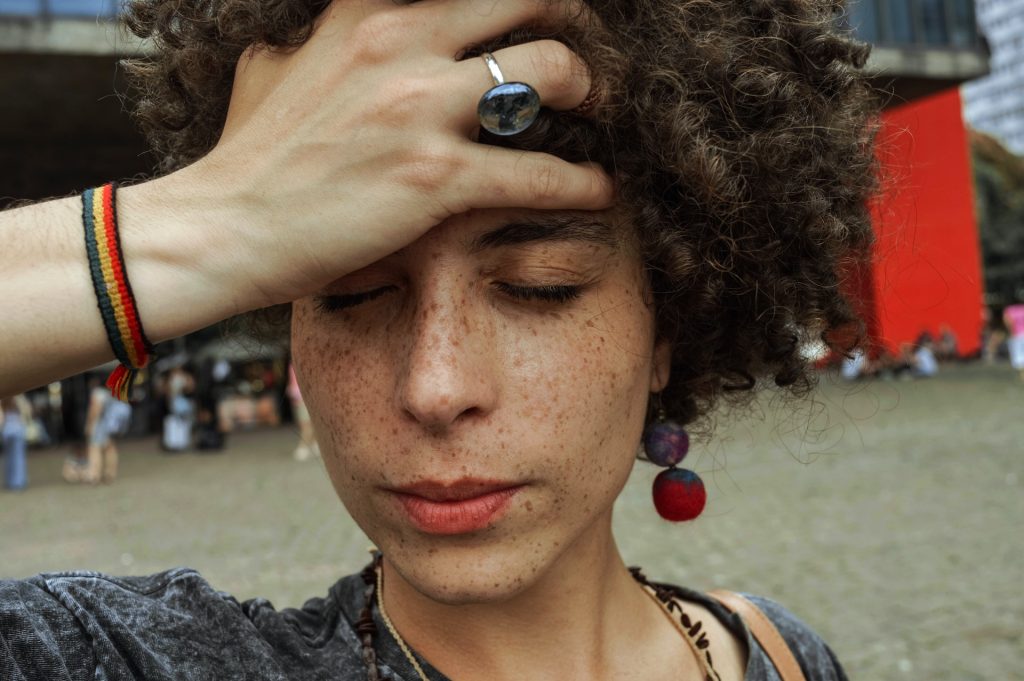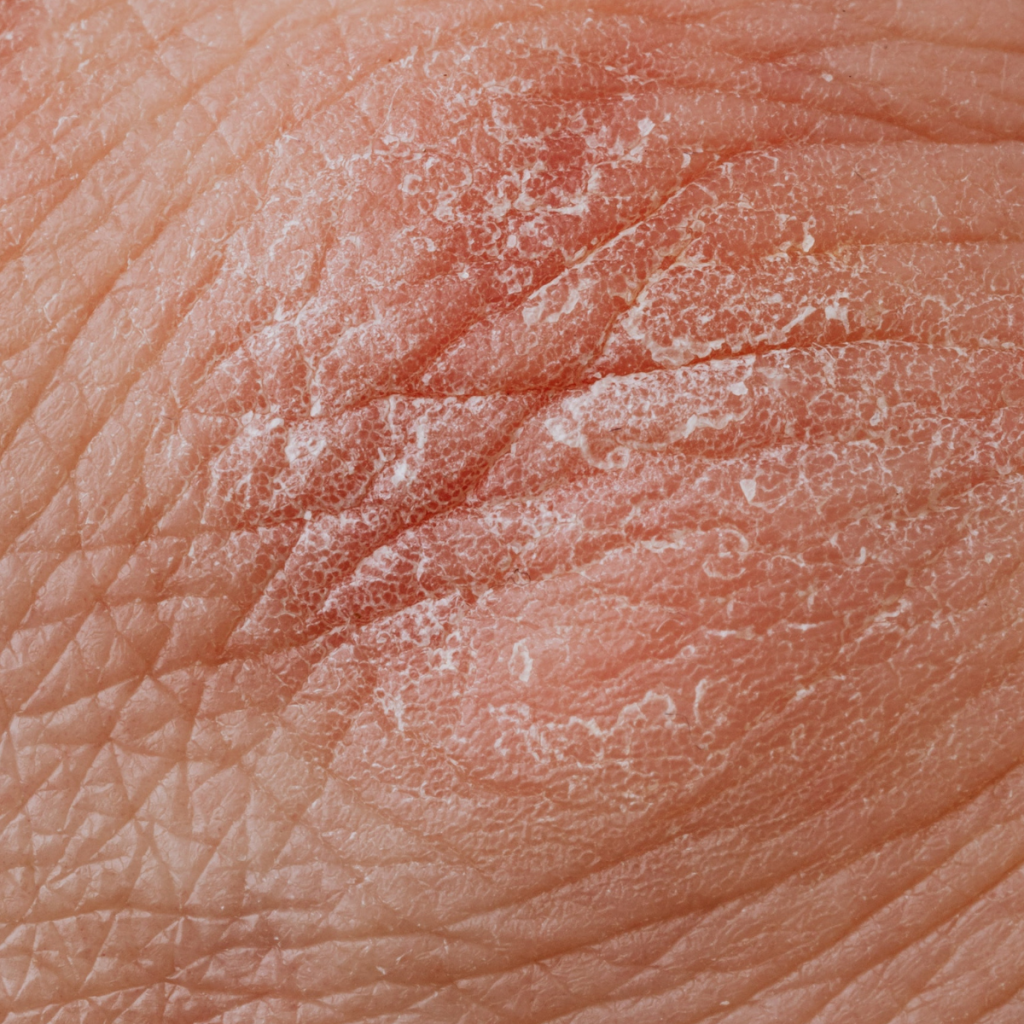Discover the key distinctions between dandruff and a dry scalp.
Understanding the Difference Between Dandruff and a Dry Scalp
Have you ever looked at your scalp and wondered what those pesky white flakes were? Or maybe you’ve experienced annoying dryness on your scalp that just won’t go away. Well, fear not, because in this article, we’ll help you understand the difference between dandruff and a dry scalp. So sit back, relax, and let’s dive into the fascinating world of scalp health!
What is Dandruff?

Dandruff, oh dandruff! The bane of many scalps, dandruff refers to the shedding of dead skin cells from the scalp. It’s like a mini snowstorm happening right on your head! But what causes this flurry of flakes? Well, it turns out that a yeast-like fungus called Malassezia is often to blame. This mischievous fungus enjoys feasting on the oils in your scalp, leading to irritation and flaking.
Imagine walking through a winter wonderland, except instead of snowflakes gently falling from the sky, they are cascading from your scalp. The sight of those tiny white flakes drifting down onto your shoulders can be quite disconcerting. But fear not, for there are ways to tackle this pesky problem!
Causes of Dandruff
While Malassezia is the main culprit behind dandruff, there are a few other factors that can contribute to its presence. Stress, hormonal changes, and certain skin conditions can all play a role in triggering dandruff. So, remember to take it easy and keep those stress levels in check!
Stress, oh stress! We all experience it from time to time, but did you know that it can wreak havoc on your scalp? When you’re stressed, your body produces more oil, creating a feast for the Malassezia fungus. So, the next time you feel overwhelmed, take a deep breath and give your scalp a break!
Symptoms of Dandruff
How do you know if you have dandruff? Well, besides the obvious white flakes dotting your favorite black shirt, other symptoms include an itchy scalp and redness. You may even notice some oily or greasy patches in your hair. Ah, the joys of dandruff!
Imagine the incessant itchiness that accompanies dandruff. It’s like having a tiny army of ants crawling on your scalp, constantly reminding you of their presence. And let’s not forget the embarrassment of having to brush off those telltale flakes from your shoulders in public. It’s a battle against the elements, right on top of your head!
Common Treatments for Dandruff
Luckily, there are plenty of ways to combat those pesky flakes. Anti-dandruff shampoos are readily available and can work wonders in reducing dandruff. Look for shampoos containing active ingredients like zinc pyrithione or ketoconazole. These mighty warriors will help fight off that troublesome Malassezia and bring harmony back to your scalp!
Imagine stepping into the shower with a bottle of anti-dandruff shampoo in hand. As the warm water cascades down your head, you squeeze out a generous dollop of shampoo and lather it into your hair. The soothing scent fills the air as you massage your scalp, feeling the shampoo working its magic. With each rinse, you can almost hear the flakes being washed away, leaving behind a clean and refreshed scalp.
But remember, consistency is key when it comes to treating dandruff. Make sure to use your anti-dandruff shampoo regularly to keep those flakes at bay. And don’t forget to give yourself some self-care time to relax and unwind, as stress can exacerbate the problem. So, take a deep breath, grab that shampoo bottle, and bid farewell to those troublesome flakes!
What is a Dry Scalp?

A dry scalp, on the other hand, is like a desert in need of some hydration. It occurs when your scalp lacks the moisture it needs to stay happy and healthy. Just like your skin can get dry, so can your scalp! It’s time to quench that thirst, my friend!
Imagine walking through a vast desert, with sand dunes stretching as far as the eye can see. The scorching sun beats down on your head, and you begin to feel the dryness seeping into your scalp. This is similar to what happens when your scalp becomes dry and dehydrated.
Your scalp, like the rest of your skin, is covered in tiny oil glands called sebaceous glands. These glands produce sebum, a natural oil that helps to moisturize and protect your scalp. However, various factors can disrupt this delicate balance, leading to a dry scalp.
Causes of a Dry Scalp
Several things can lead to a dry scalp. Cold weather, harsh hair products, and even frequent hot showers can all zap your scalp of its natural oils, leaving it dry and flaky. When the temperature drops, the air becomes drier, and this lack of humidity can suck the moisture right out of your scalp.
Additionally, using hair products that contain harsh chemicals or alcohol can strip away the natural oils from your scalp, leaving it feeling parched and irritated. It’s important to choose hair products that are gentle and nourishing to maintain a healthy scalp.
Furthermore, indulging in long, hot showers may feel relaxing, but the heat can actually be detrimental to your scalp. The hot water can strip away the protective oils, leaving your scalp dry and vulnerable. So, while a steaming shower can be tempting, it’s advisable to opt for lukewarm water to keep your scalp hydrated.
Symptoms of a Dry Scalp
A dry scalp comes with its own set of symptoms. You might notice tightness or a feeling of dryness on your scalp, as if it’s begging for a refreshing drink of water. This sensation can be quite uncomfortable and may even lead to a constant urge to scratch your head.
As you scratch, you may find that your scalp becomes itchy and irritated. It’s important to resist the urge to scratch vigorously, as this can further damage your scalp and lead to inflammation. Instead, opt for gentle massages to relieve the itchiness and stimulate blood flow to your scalp.
Another common symptom of a dry scalp is flakiness. You may notice small, white flakes on your scalp, hair, or shoulders. These flakes are actually dead skin cells that have shed from your scalp due to the dryness. While they may be unsightly, they are harmless and can be easily managed with the right treatments.
Common Treatments for a Dry Scalp
To bring back moisture to your scalp, it’s essential to choose the right hair products. Look for shampoos and conditioners that are specially formulated for dry scalps. These products often contain ingredients like aloe vera or coconut oil that can provide that much-needed hydration.
In addition to using the right hair products, incorporating a scalp treatment into your routine can work wonders. Scalp treatments, such as oils or masks, can deeply nourish and hydrate your scalp, helping to restore its natural balance. Massage the treatment into your scalp, allowing the ingredients to penetrate deeply and provide relief.
Furthermore, adjusting your shower routine can make a significant difference in combating a dry scalp. Opt for shorter showers with lukewarm water instead of long, hot ones. This will help to preserve the natural oils on your scalp and prevent further dehydration.
Lastly, don’t forget the power of hydration from within. Drinking an adequate amount of water each day can help to keep your scalp and skin hydrated. Remember, a healthy scalp starts from the inside out!
Key Differences Between Dandruff and Dry Scalp
Now that we’ve explored the individual characteristics of dandruff and a dry scalp, let’s take a moment to compare the two. After all, it’s good to know what sets them apart!
Dandruff and dry scalp may seem similar at first glance, but upon closer examination, several key differences become apparent. Understanding these differences can help in identifying and treating these conditions effectively.
Difference in Symptoms
While dandruff and a dry scalp may share some symptoms, they also have a few key differences. Dandruff often comes with noticeable flakes that can be seen on the scalp and sometimes even on clothing. These flakes are a result of the excessive shedding of dead skin cells from the scalp. In addition to flakes, dandruff can also be accompanied by itchiness, redness, and scalp irritation.
On the other hand, a dry scalp focuses more on tightness and dryness. It feels rough and may appear dull or lackluster. Unlike dandruff, a dry scalp may not produce visible flakes, but it can still cause discomfort and make the hair appear unhealthy.
So, in a way, comparing dandruff to a dry scalp is like comparing a blizzard to a desert. Both can be unpleasant, but they manifest in distinct ways.
Difference in Causes
Although both dandruff and a dry scalp involve a lack of moisture, their causes differ slightly.
Dandruff is primarily caused by that mischievous fungus, Malassezia. This fungus is naturally present on the scalp, but in some individuals, it can overgrow and cause an inflammatory response. This leads to an accelerated rate of skin cell turnover, resulting in the characteristic flaking and irritation associated with dandruff.
On the other hand, a dry scalp is often the result of external factors. Harsh weather conditions, such as cold winter air or excessive heat, can strip the scalp of its natural oils, leaving it dry and dehydrated. Additionally, certain hair products that contain harsh chemicals or alcohol can further contribute to the dryness of the scalp.
So, it’s like a battle between an unwanted guest (Malassezia) and a harsh environment (weather and hair products) when it comes to dandruff and a dry scalp.
Difference in Treatments
When it comes to treating dandruff and a dry scalp, the approaches vary.
Dandruff can often be managed with anti-dandruff shampoos that target the underlying fungal activity. These shampoos usually contain active ingredients such as ketoconazole, selenium sulfide, or zinc pyrithione, which help control the growth of the Malassezia fungus. Regular use of these shampoos can effectively reduce flakes and alleviate itchiness associated with dandruff.
On the other hand, a dry scalp requires moisturizing products specifically designed to replenish moisture and nourish the scalp. These products often contain ingredients like aloe vera, coconut oil, or shea butter, which help hydrate and soothe the scalp. Regular use of these moisturizing products can restore the scalp’s natural balance and alleviate dryness and tightness.
So, choosing the right treatment is like choosing the right weapon for the right enemy. It’s important to address the underlying cause and provide the scalp with the care it needs.
How to Determine if You Have Dandruff or a Dry Scalp
Now that you know the ins and outs of dandruff and a dry scalp, you’re probably wondering how to figure out which one you have. Don’t worry, we’ve got you covered!
Self-Assessment Techniques
Take a closer look at your scalp. Are you noticing visible flakes? If so, dandruff may be the culprit. If you’re experiencing dryness without the notable flakes, chances are you’re dealing with a dry scalp. It’s like playing detective on your own scalp!
When to See a Dermatologist
If you’ve tried various treatments and nothing seems to work, or if your symptoms are causing you extreme discomfort, it’s time to seek help from a dermatologist. They can assess your scalp and provide personalized recommendations to help you conquer those pesky scalp issues. It’s like having a superhero for your scalp!
The Final Verdict
So, there you have it – the lowdown on dandruff and a dry scalp. Armed with this knowledge, you’re now equipped to identify the cause of those scalp woes and take action to restore balance. Remember, scalp health is an essential part of overall hair health, so let’s keep those flakes at bay and our scalps happy and moisturized. Here’s to a flake-free future!+





